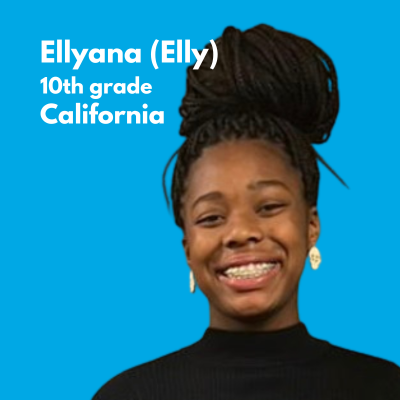The appropriations process takes a long time. Some years it takes longer than others. The budget process usually kicks off when the President announces budget recommendations in February (or March like FY24’s budget recommendations this year) to the passage of a budget by the end of September (fingers crossed). The Federal Fiscal year begins in October and ends at the end of September every year.
While the deadline for the Hill to move on appropriations isn’t until the end of September, there are a lot of steps between now and then to develop their full appropriations package. This gives the field many opportunities to engage.
Before we share those opportunities, it’s important to emphasize that there is a difference between authorizations and appropriations. Authorizing language says that something is allowed and the appropriation is the amount of money that is put up against it. A full review of how the process works can be found here, or find a summary of the process here.
What’s Happening Right Now
The Senate Budget Committee is starting to meet to determine their priorities. This is a really important time to continue to share your stories of impact especially if your programming relies on Federal funding to continue or to expand.
To do this, you can set up meetings with your local representative to educate them about your impact and the importance of out-of-school time STEM. If your organization works in a particular state or a particular set of states or is grounded in a particular local area, you have representatives both in the House and Senate who would love to hear about what you’re doing. It’s a great time to be able to reach out to those offices. Tell your story. Let them know who you are.
Sharing your story is advocating for what works and educating your elected representatives on the work happening in their states; it is not lobbying.
Advocacy is educating elected officials about the work being done; why you exist; the problem you are working to solve, who is being served and how accomplishments are contributing to a thriving community. Any nonprofit can do this.
Lobbying is making a specific ask for a specific appropriation amount to an appropriator. Nonprofits are allowed to lobby, however, there are some necessary steps that should be in place to protect your nonprofit status.
Share the experiences of the young people, families and other community members impacted by your programs. It is important for elected officials to see the incredible value of out-of-school time programs and specifically out-of-school time STEM programs as it connects to their priorities. The field has played and continues to play a significant role in COVID recovery, addressing significant gaps in learning, and supporting student mental health.
Other organizations, like the Afterschool Alliance and STEM Education Coalition offer additional support to get more involved.
Additionally, the Engage Every Student initiative is uplifting important stories from the field. This is another approach to elevate your work in the out-of-school space at a Federal level.
The Senate and the House of Representatives will meet separately first to determine their appropriations priorities and then come together to reconcile those priorities. After these meetings a final appropriation bill will be released to meet the end of September deadline.
Should Congress not come to an agreement by that deadline, they will then pass a continuing resolution or the government will be closed for a little bit of time.
The most important detail for the moment, is telling your story is the most important thing you can do. Tell everyone why this work matters and why it should be a priority.
Here Are Some Helpful Examples
USE OF FEDERAL FUNDS TO EXPAND PROGRAMMING
Using American Rescue Plan (ARP) dollars to expand summer programming, California based Camp EDMO – program providing equitable high-quality STEAM and social-emotional learning – experienced a 250% growth in district partnerships for Summer 2022. Their expansion includes working with rural and traditionally underserved districts, with new projections showing a 1000% growth for provision of summer and/or after school services to about 3,500 students.
LEVERAGING PARTNERSHIPS TO IMPACT COMMUNITIES
In Oklahoma, Tulsa Public Schools partnered with the Opportunity Project (a local intermediary organization) to use a portion of ESSER II and ARP ESSER funds to implement out-of-school learning opportunities. More than 80 community and faith-based organizations provided an array of opportunities for students in summer 2021. The Opportunity Project organized the RFP process, and the district used federal funds to help existing community-based organizations expand programming. District leaders plan to sustain these initiatives into the future by attracting philanthropic and government funds.
SHARING YOUTH VOICE
Afterschool and summer programs are consistently having an impact in the lives of young people across the country. For example, the Million Girl
s Moonshot Flight Crew members share their experiences in out-of-school STEM to encourage other young people to pursue STEM learning.

“Afterschool STEM is a place where I can learn about things that I don’t learn about in my usual math and science classes. STEM is limitless. With coding, I’ve been able to make dogs fly and robots talk. I’m able to meet people who have similar interests that I do. I often found myself being the only black girl in the STEM spaces. And this was really discouraging. It made me question if people like me were meant to excel in STEM fields, thus making me want to be a mentor and role model to young girls who look like me – Black girls who are underrepresented in these STEM spaces. I want to be able to inspire them and to show them that they do belong in these STEM spaces,” Ellyana, 2023 Flight Crew Member shares why she joined the Million Girls Moonshot Flight Crew – a youth ambassador program elevating the voices of youth working in their communities to break down stereotypes and spark their peers’ curiosity in STEM.
Think impact when sharing. How many more students are and will be better off thanks to your work.
What’s Already on the Table
As mentioned in a previous blog, there are a few budget recommendations we are actively watching during this appropriations process, including:
- Possible increases in Title I grants and Title IV-A funding to help close opportunity gaps and support evidence-based, comprehensive services for students, families and communities (including out-of-school programs and STEM);
- Any changes in the proposed budget for 21st Century Community Learning Centers;
- Possible funding for the creation of regional technology hubs as part of the CHIPS and Science Act;
- Possible increases to AmeriCorps funding to support more volunteer placements in education, public health and place-based economic opportunities (e.g. rural or urban areas); and
- Possible funding increases for Child Care and Development Block grants, which support children from early childhood thru age 12 and can be used to expand out-of-school STEM learning opportunities for young students.
While we continue to share our stories and wait to watch what happens with appropriations, there are a few funding opportunities for your programs and networks to look into.
American Rescue Plan (ARP) dollars are available through September 30, 2024. Out-of-school programs should partner with others, especially statewide afterschool networks, to access those dollars to expand and provide hands-on STEM learning outside the classroom. This tracker shows what your state is already doing.
Open Competitions:
- NSF PreK-12 and Informal STEM Learning and Teaching (Due June 8th, 2023)
- 21st Century Community Learning Center Technical Assistance Center (Due May 30th, 2023)
Keep an eye on the Department of Education’s Funding Forecast and National Science Foundation’s list of open grant opportunities.


